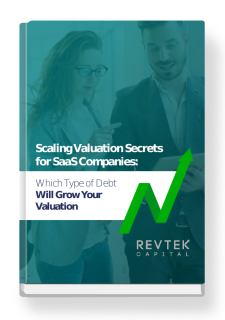You’ve decided to expand your software company, and your current venture needs more funding. If you’re in SaaS, you’re going to want a SaaS business model to show potential investors the value in what you offer. When considering the vastly different financing needs of Software as a Service (SaaS) companies compared to traditional commercial businesses, it follows that the SaaS business plan has similarly unique needs.
Types of Business Plans
Generally, there are two main types of business plans a company will use: traditional and lean plans. When you write a business plan, you should set out to include all the most important information about your business growth, how you are planning to scale, and most importantly, information about the types of problems your product fixes.
Traditional Business Plans for SaaS Companies
These types of business plans are generally longer and require in-depth information about not only your product, but the target audience you are looking to serve. Generally, these include the following sections:
- Executive summary: This is where you get to talk about you, your company, and why it is valuable.
- Company Description: Here, you build on your executive description by explaining more about the mission of your company and the problems your product is aiming to solve.
- Market Analysis: This is where you use data to explain the different sectors of your market and how your product appeals to them.
- Organization Structure: Here, you explain the legal organization of your company’s ownership. Depending on the size of your company and the number of your products, the complexity of this section varies.
- The Product: simple and straightforward– explain your product and why it’s amazing.
- Marketing Plans: Simple and straightforward—explain your product and why it’s amazing.
- Finances and Funding: Finally, you set out your financial needs to get your plan off the ground. This can include both shorter-term funding in addition to other needs that come with scaling your company.
Lean Business Plans for SaaS Companies
Lean plans are best for companies that are in earlier stages of development or who plan to change their product regularly. For some SaaS companies, this plan often leaves more room to accommodate different product lines, packages, and changes that will eventually happen over time.
Advantages of a Lean Business Plan
- Explain Partnerships, Activities, and Resources: For many in the SaaS community, offering a product that serves many functions is an important aspect of your value. This is where you should explain the various offerings you can give to your clients, in addition to the kinds of working partnerships you will secure to get there.
- Determine Product Value: Here, you explain not only why your product is awesome, but how it fares better than your immediate competition.
- Outline your Audience: Through market research, you will show which groups of individuals will most likely benefit from using your product.
- Outline your Cost Structure and Revenue Stream(s): For many SaaS companies, your cost structure and revenue streams are going to look different from companies selling a physical product. Here, you want to outline where, when, and how much funding you will need, in addition to the different ways in which you will bring revenue in (such as different tiered products, subscription duration, etc.)
Now that we know a little more about the different types of models you will use for your business plan, we will discuss in greater detail what information you will need most.
How to Create a SaaS Business Plan
If you are looking for a business plan template, the internet has many options to offer. However, it’s good to remember that not every template will fit the needs of every business (or every investor, for that matter), so it’s always best to make sure you know not only what information you should include, but why it’s important to pitching your company.
Know Your Niche and Their Pain Points
One of the detrimental mistakes many SaaS businesses make is developing a product before developing an audience. This is the business equivalent of trying to wear your pants as a sweater. The reason is simple: if you don’t offer a compelling solution to a problem your audience already has, there is no reason to buy your product.
Calculate CAC for SaaS Products
What many entrepreneurs don’t realize about SaaS products is that they follow a different growth curve than many other types of products. This is largely because SaaS companies rely on recurring subscriptions rather than a one-time purchase.
In the beginning phases of a SaaS company, it takes a heavier financial push to see growth than other industries. You need to acquire leads that convert, which will eat up a large part of your early revenue. Making this initial investment, however, is an important step. Ensuring your leads are hot and your customers are likely to stick with you over the long haul is integral to building the bedrock of your financial stability.
As you acquire customers, they become the foundation of your recurring revenue. Over time, the initial cost of acquiring these customers begins to pay for itself.
Define Your Pricing Mode
For the reasons mentioned above, having a pricing model that works for both your audience and your product is an essential component of your business plan. Here, you will want to first decide and state what your product will actually cost and how those costs contribute to your overall revenue. This usually involves a tiered pricing model featuring a free (or low-cost) package, complemented by other “premium” plans with more usable services.
Here is also a good point to outline your growth prospects and how you plan to achieve your goals. This not only shows business viability but also a way for you to show you are knowledgeable and well-informed about the future prospects of your business.
Prove Your Profitability
In addition to building a pricing model, show your long-term profitability. This most often includes different levels of products you would like to offer in the future, different business ideas related to your main product, and even ways in which you could monetize your company going forward. This step looks different depending on your industry and your overall goals for your company. The important aspect of this step is showing the ability to conceptualize your product over time and many iterations.
About RevTek Capital
RevTek Capital is an industry-leading capital provider that offers strategic debt financing of $2MM to $20MM+ in tranches to innovative companies with predictable annual recurring revenue (ARR) of $5MM to $75MM. The funding is used for sales growth, acquisitions, and enhancing infrastructure for scaling operations. Each company’s debt structure is customized to its unique accomplishments and circumstances.
RevTek leverages years of lending and entrepreneurial experience. This allows them to provide customized credit solutions to growing companies with predictable recurring revenue nationwide. We aim to help entrepreneurs grow their businesses while maximizing enterprise value for owners, management teams, and shareholders. In addition, the professional team at RevTek has many years of experience in marketing and operations to assist their clients.
Key Benefit Summary
• Cost-effective capital for growing tech-enabled companies
• Company leadership retains control
• Repayment is structured into simple and manageable monthly payments
• Faster access to funding—closing in as little as four weeks
If you need capital to give your tech-enabled business the next boost it needs or need more advice on how to grow your business, please get in touch with us at RevTek Capital. To learn more about RevTek Capital, please visit www.revtekcapital.com.



